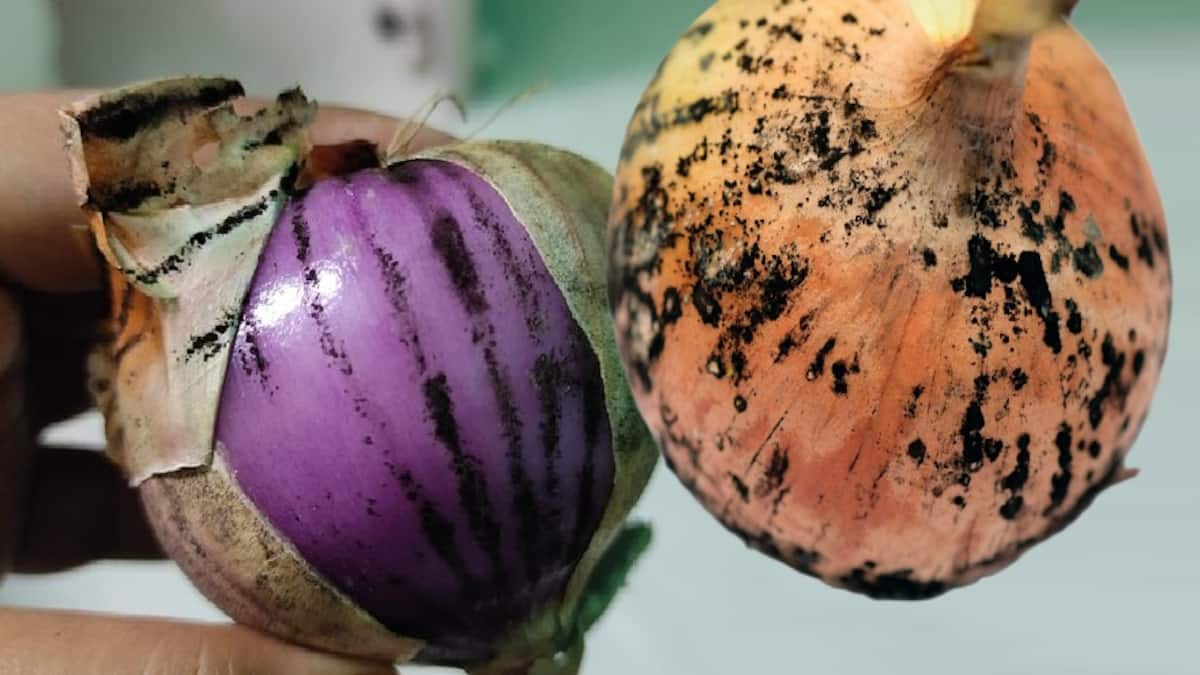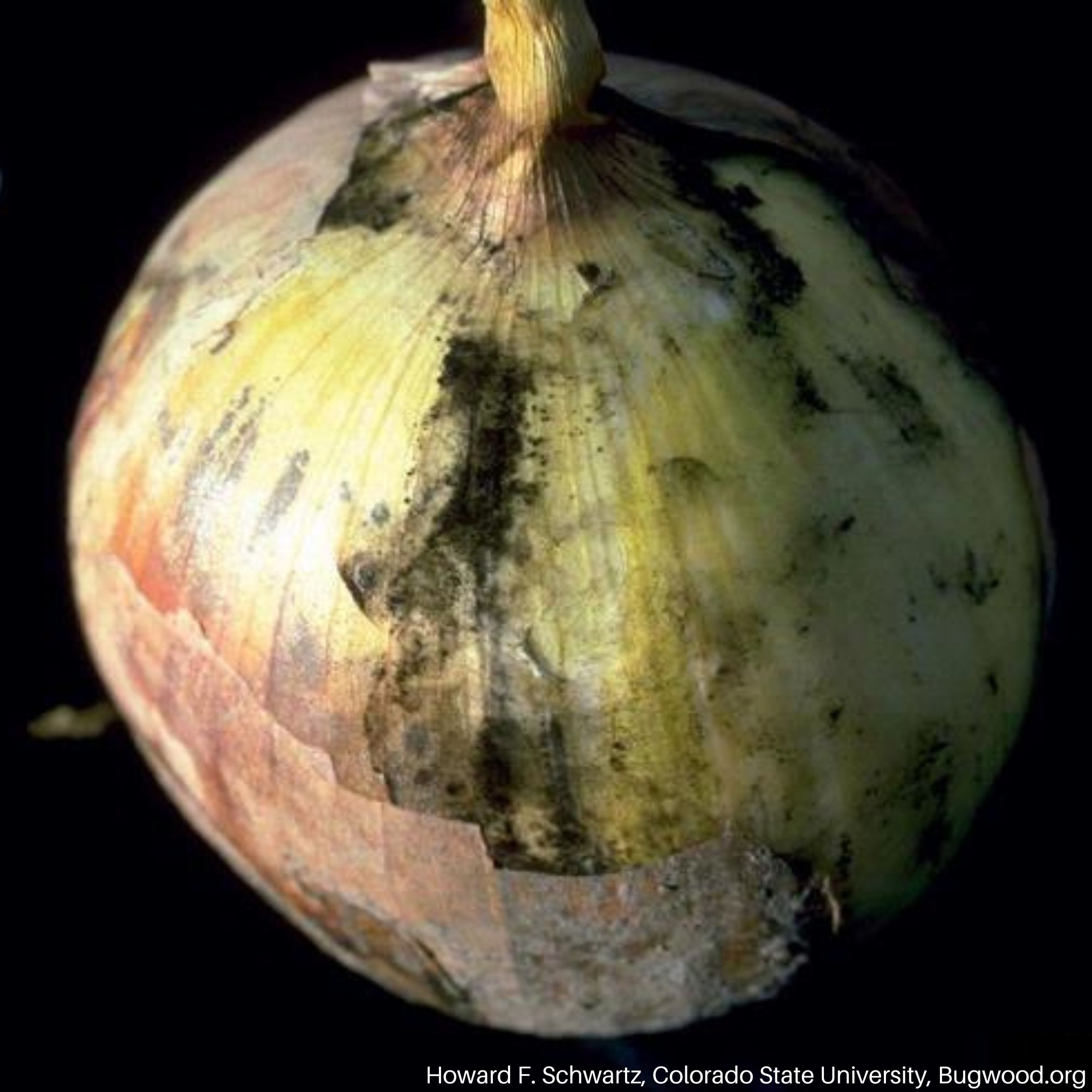
Black Onion Mold
Aspergillus Niger
Pathogen:
Fungus
Type:
Risk:
MILD
Micosis/Hongos


WHO CAUSES IT?
Aspergillus niger is a fungus that can cause the disease known as black mold on onions. It is a cosmopolitan fungus found throughout the world and is known for its ability to produce black spores that can survive in harsh conditions. The fungus can grow on a wide variety of substrates, including soil and plant debris, and is easily spread by air, water, and contact with contaminated surfaces. During its growth, A. niger produces sporulation structures called conidiophores, which release spores to infect new plants and substrates. Infection caused by Aspergillus niger is especially problematic postharvest, during storage.
SYMPTOMS
Black mold caused by Aspergillus niger on onions causes a number of symptoms including dark or black Taches on the bulbs and leaves. Infected bulbs may become mushy and emit an unpleasant odor, which can lead to significant losses in crop quality and quantity.
• Black or brown Taches on bulbs and leaves.
• Soft and decomposed bulbs, which emit an unpleasant odor.
• Decrease in the quality and quantity of the harvest.
• Injuries to the roots and aerial parts of the plant.

TEMPERATURE AND HUMIDITY
20 ºC - 30ºC
80% - 100%
TRANSMISSION PATHS
Air, water, remains of infected plants, contact with contaminated tools.
Do you want to remove this pest? Choose how you want to treat it.
TREATMENTS
Chemical treatment
• CIPRODINIL 37.5% + FLUDIOXONIL 25% [WG] P/P
Authorized treatments in organic farming
-
Traitements biologiques
-
Recommendations
To prevent and control black mold on onions, integrated pest and disease management measures should be followed.
• Use fungus-resistant or tolerant onion varieties.
• Practice good crop rotation to reduce pathogen pressure in the soil.
• Ensure that the onions are properly dried after harvesting to prevent the spread of the fungus.
• Store onions in optimal temperature and humidity conditions to prevent black mold.
• Remove and destroy the remains of infected plants to prevent spread.
• Apply appropriate fungicides according to local recommendations to control the fungus.
Sponsored link
Sponsored link
Sponsored link
Sponsored link
Sponsored link
Sponsored link
Effective against all types of fungi
TREATMENTS
Homemade treatments
There are no home treatments
Natural allies
Chemical treatments
There are no treatments for this disease. Treatments are directed at the insect vectors that transmit it. See insect treatments.
RECOMMENDATIONS
- Avoid wetting the leaves when watering, do it directly to the ground.
- Don't put the plants too close together, leave room for air to circulate.
- Remove leaves or diseased parts as soon as you see them.
- Use natural fungicides such as baking soda, copper or horsetail.
- Do not reuse soil from plants that were sick.
- Clean the tools well before and after using them.
- If you grow indoors, open windows or use fans from time to time.
REPELLENT PLANTS
-
RECOMMENDED PRODUCTS
Sponsored link
Sponsored link
Sponsored link
Sponsored link
Sponsored link
Sponsored link
Effective against all types of fungi
*The recommended treatments are still recommendations according to the databases of the authorities and at no time do they replace the guidelines established according to the legislation of each country
*The products shown are recommendations and are not our own products. As Amazon Associates, we earn revenue from purchases of recommended products.






















